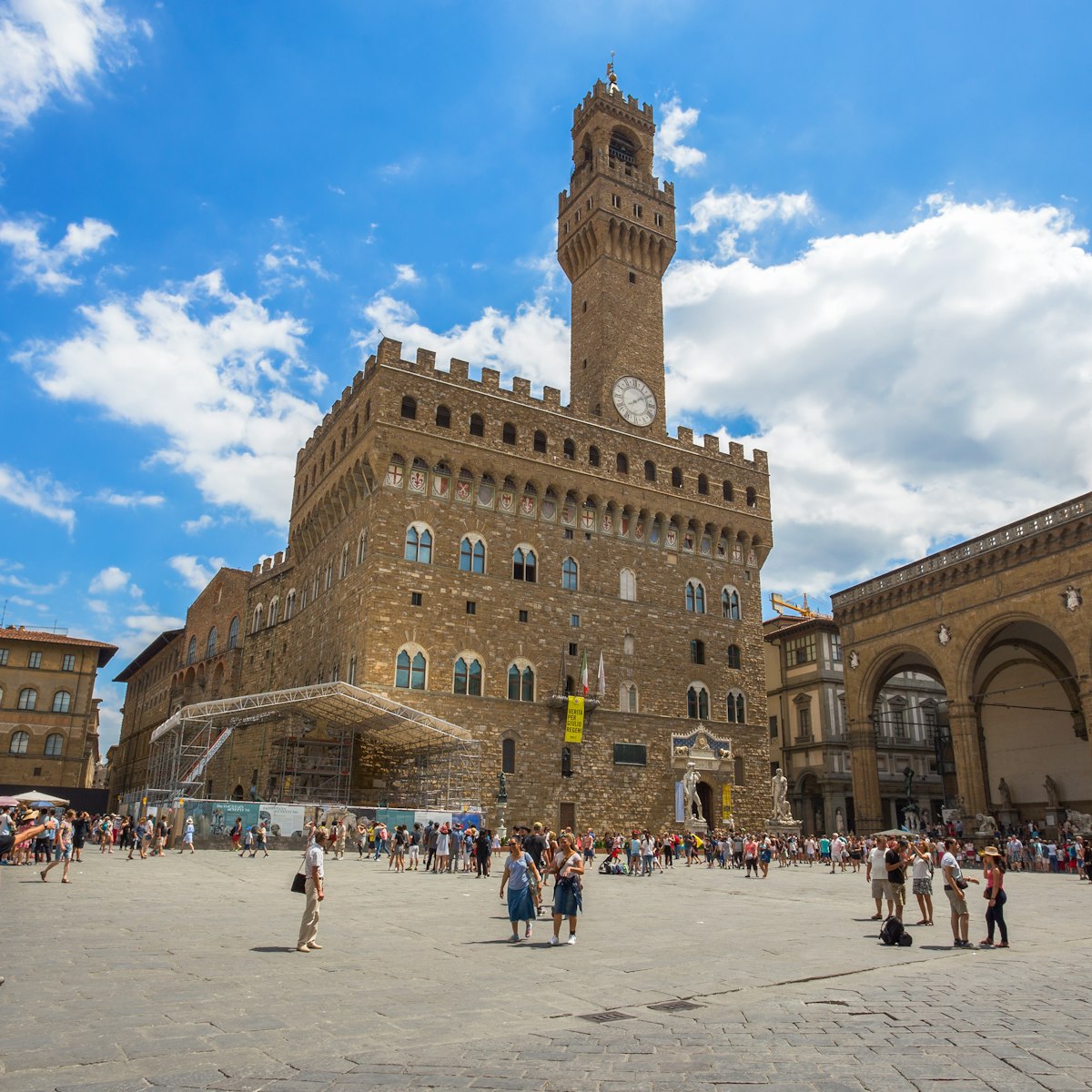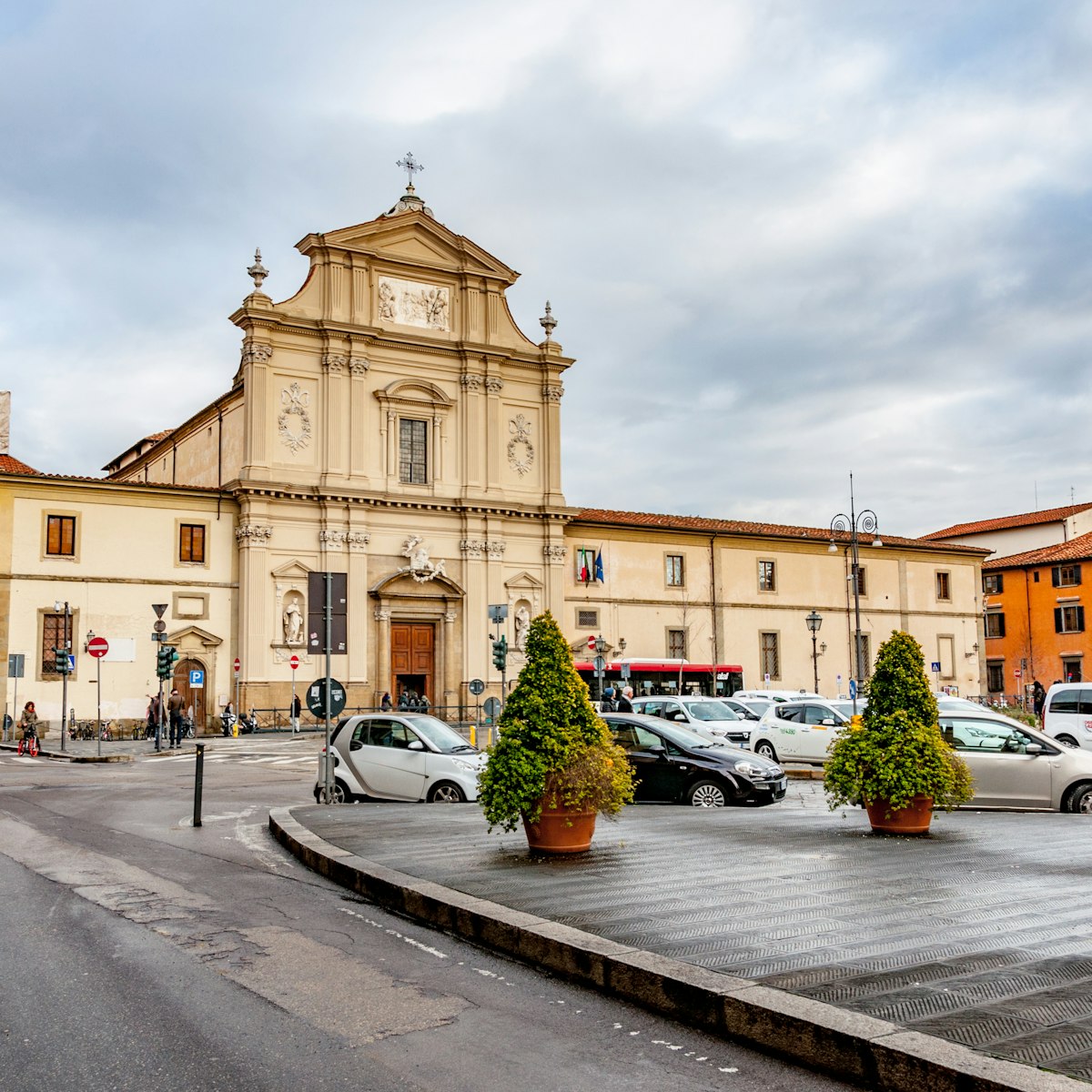Hidden in the dense forest of the national park are the Benedictine hermitage and monastery of Camaldoli, founded between 1024 and 1025 by St Romualdo and now home to a small community of monks. From Poppi, follow Via Camaldoli (SR67) up through the forest; the eremo (hermitage), 6km uphill to the left where the road splits, and monastero (monastery), 2km straight downhill, are both clearly signposted.
At the remote hermitage, you can visit the baroque Chiesa del Sacro Eremo (1658) with its Bronzino altarpiece of the Crucifixion and Four Saints, and the Cappella di San Antonio Abate, left of the main entrance, with an exquisite ceramic altarpiece depicting the Virgin, Child and Saints by Andrea della Robbia. In the courtyard, opposite the church, is the 11th-century Cella di San Romualdo Abate (cell) where St Romualdo lived, worked and prayed. Before leaving the hermitage complex, admire the Porta Speciosa, a black bronze set of doors to the right of the main entrance chillingly adorned with a skull, headstone, cranium of a billy goat and a tree, all representing death; an owl represents a solitary monk praying at night, and the bell strung from the tree is a symbol of life. The unusual artwork is a contemporary piece by Claudio Parmiggiani (b 1943).
Continuing to the monastery, a 3km drive away through thick forest, admire a trio of paintings by Vasari in the Chiesa dei Monastero di Camaldoli (1501–24), restored in 1772. Don't miss the 15th-century Antica Farmacia (1450), an old-world pharmacy with beautiful wood-panelled cabinets stocked with soap, perfumes, cosmetics and ancient natural remedies made by the 20 resident monks. A small museum displays wooden hand presses, stone milling machines, earthenware oil jars, copper alembics and other tools used by the monks since the 15th century.
An albergo, trattoria and bakery selling freshly made schiacciata (flat bread made with olive oil) are located opposite the monastery.







